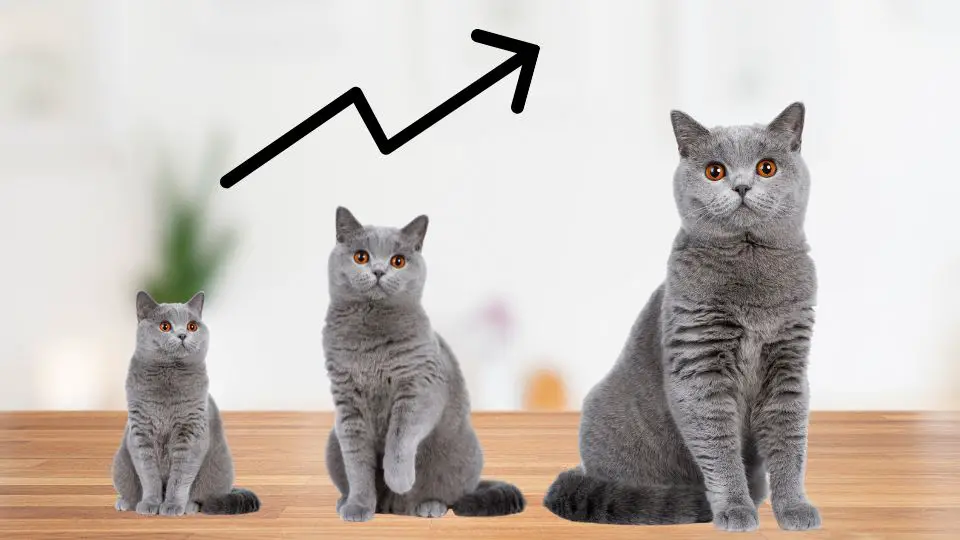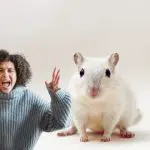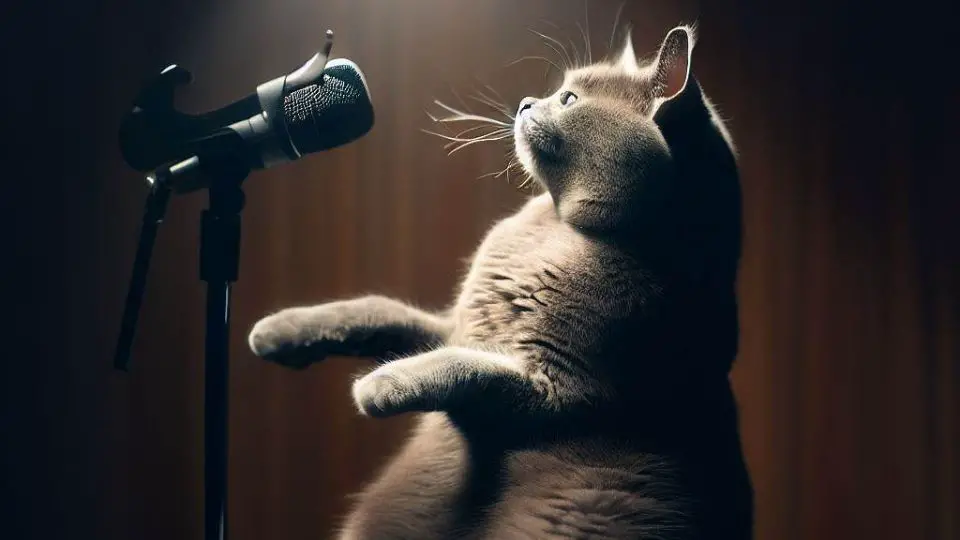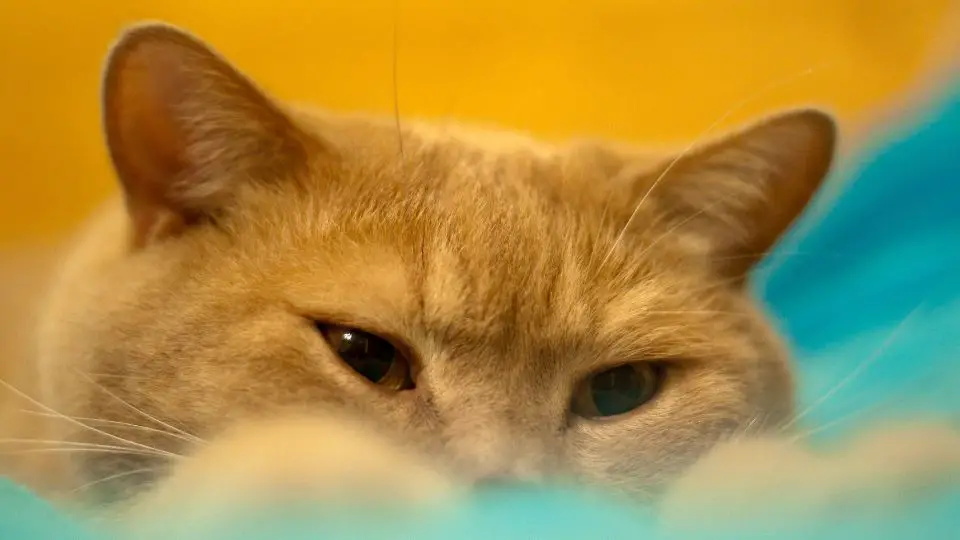Understanding the growth stages of British Shorthair cats is essential for providing them with the appropriate care and meeting their specific needs at each phase of their development.
From the adorable kitten stage to the graceful senior years, British Shorthairs go through various growth milestones that shape their physical and behavioral characteristics.
In this article, we will explore the different growth stages of British Shorthair cats and provide insights into their unique needs and requirements.
Kitten Stage
The Kitten Stage is a crucial period in the growth and development of British Shorthair cats. During this time, they go through significant changes and milestones that shape their physical and behavioral characteristics. Let’s explore the two phases of the Kitten Stage: birth to 12 weeks and 3 to 6 months.
Birth to 12 weeks:
In the first few weeks of life, British Shorthair kittens are completely dependent on their mother and littermates. Their senses are still developing, and they rely on their sense of touch and smell to navigate their surroundings. They gradually open their eyes and begin to explore their environment.
During this stage, kittens start to wean from their mother’s milk and are introduced to solid food. It’s important to provide them with a balanced kitten diet that supports their growth and development. Litter box training also begins around this time, as they learn to use the litter box for their bathroom needs.
Socialization plays a vital role in the development of kittens. They learn to interact with their littermates and understand social cues. Gentle handling and positive experiences with humans help them become well-socialized and confident cats.
Playtime is an essential part of the Kitten Stage. Kittens engage in playful behavior to develop their coordination, agility, and hunting skills. Interactive toys, such as feather wands or small balls, can provide them with mental and physical stimulation.
3 to 6 months:
During this phase, British Shorthair kittens experience rapid growth and weight gain. They may have boundless energy and a strong desire to explore their surroundings. It’s important to provide them with a safe and stimulating environment to satisfy their curiosity and prevent boredom.
Socialization and exploration continue to be essential. Exposing kittens to different sights, sounds, and experiences helps them become adaptable and well-adjusted cats. It’s a good time to introduce them to new people, environments, and other animals in a controlled and positive manner.
Teething usually begins around three months of age. Kittens may chew on various objects to alleviate discomfort. Providing appropriate chew toys can help redirect their chewing behavior and protect your belongings.
Coordination and agility continue to improve during this stage. British Shorthair kittens become more adept at climbing, jumping, and exploring their environment. Providing vertical spaces, such as cat trees or shelves, allows them to exercise their natural climbing instincts.
Juvenile Stage
During the juvenile stage, which typically lasts from 6 to 12 months, British Shorthair kittens continue their growth and development. Here are some key aspects of this stage:
- Gradual transition to adult food: As kittens approach the 6-month mark, it’s time to start gradually transitioning them from kitten food to a high-quality adult cat food. This ensures they receive the appropriate nutrients for their changing needs.
- Sexual maturity and potential onset of heat cycles: Around 6 to 8 months of age, British Shorthair kittens may reach sexual maturity. Female kittens may start experiencing their first heat cycles during this period. It’s important to be aware of the signs and consider spaying or neutering to prevent unwanted pregnancies.
- Continued growth and muscle development: Although most of the rapid growth occurs during the kitten stage, British Shorthairs continue to grow and develop during the juvenile stage. Their bones and muscles are still strengthening, and they may gain more weight and size.
- Development of adult coat and color: As the kitten’s fur matures, the adult coat begins to develop. British Shorthairs have a dense, plush coat, and during the juvenile stage, you may notice changes in their coat color and pattern. The true adult coat starts to emerge, and it may take several months or even years for the coat to fully develop its final appearance.
During the juvenile stage, you have to provide your British Shorthair with a well-balanced diet that supports their growth and development. Regular veterinary check-ups are also recommended to monitor their health and ensure they are reaching their milestones appropriately. By providing proper care and attention during this stage, you can help your British Shorthair transition smoothly into adulthood.
Adult Stage
As a British Shorthair enters the adult stage, which typically spans from 1 to 8 years, several aspects come into play. Here is what I’ve observed and learned from my experience with these majestic cats:
- Physical and behavioral maturity: By this stage, British Shorthairs have reached their full physical and behavioral maturity. They have developed their distinctive round face, dense coat, and muscular build that are characteristic of the breed. Their personalities have also solidified, with many British Shorthairs known for their calm and laid-back nature.
- Maintenance of ideal weight and overall health: During the adult stage, it’s crucial to ensure that your British Shorthair maintains an ideal weight to support their overall health. I’ve found that providing them with a balanced diet and regular exercise is key. Be mindful of their food intake and engage them in playtime to prevent obesity and promote a healthy lifestyle.
- Regular veterinary check-ups and vaccinations: Regular veterinary check-ups are essential during the adult stage. We can say that British Shorthairs are generally a robust and healthy breed, but the little pet must stay proactive in maintaining their well-being. Regular vaccinations, dental care, and preventive treatments for parasites are important aspects of their healthcare routine.
- Established routines and preferences: British Shorthairs thrive in stable and predictable environments. They appreciate established routines and may have their specific preferences when it comes to their favorite sleeping spots, toys, and activities. Providing them with a consistent and enriched environment can contribute to their overall well-being and contentment.
As your British Shorthair transitions into the adult stage, it’s essential to continue providing them with the love, care, and attention they deserve. From my own encounters, I’ve witnessed how their calm and affectionate nature makes them wonderful companions for many years to come. Enjoy this special stage of their lives and cherish the unique bond you share with your British Shorthair.
Senior Stage
As a British Shorthair reaches the senior stage of their life, typically starting at 8 years and older, there are certain factors to consider in order to provide them with the best care possible. Here is what you should know about this stage:
- Gradual decline in physical abilities and metabolism: During the senior stage, it’s common for British Shorthairs to experience a gradual decline in their physical abilities and metabolism. They may become less active and prefer a more relaxed lifestyle. Create an environment that accommodates their changing needs, providing them with comfortable spaces and gentle exercise options.
- Potential age-related health concerns: Senior British Shorthairs may be more prone to age-related health concerns. It’s crucial to monitor their health closely and be attentive to any changes in behavior, appetite, or mobility. From what I’ve seen, regular veterinary check-ups become even more important during this stage to address any potential health issues in a timely manner.
- Specialized diet and care for senior cats: Senior British Shorthairs may benefit from a specialized diet formulated for their unique nutritional needs. I’ve found that senior cat food options often contain specific ingredients that support joint health, promote a healthy weight, and address age-related concerns.
- Increased attention to joint health and comfort: As British Shorthairs age, they may experience joint stiffness and discomfort. Providing them with a cozy and well-cushioned bed, as well as gentle exercises that promote joint flexibility, can make a significant difference in their overall comfort. In my experience, supplements containing glucosamine and chondroitin can also be beneficial for maintaining joint health.
During the senior stage, it’s important to provide your British Shorthair with the extra care and attention they need. From my perspective, they have provided us with years of love and companionship, and now it’s our responsibility to ensure their golden years are filled with comfort and well-being. By understanding and addressing their changing needs, you can help your senior British Shorthair live a happy and fulfilling life for as long as possible.
Wrapping up
As British Shorthair cat owners, it’s crucial to recognize and appreciate the distinct growth stages that our feline companions go through. From the energetic and curious kittens to the majestic and wise seniors, each phase brings its own joys and challenges.
By understanding the growth stages of British Shorthair cats, we can provide them with the appropriate care, nutrition, and attention they need at each stage of their development. Whether it’s providing a stimulating environment for kittens, supporting the well-being of adults, or ensuring the comfort of senior cats, our understanding of their growth stages allows us to be better companions and caretakers.
So, let’s cherish every moment and embrace the beauty of each growth stage as we nurture and cherish our beloved British Shorthair cats.







